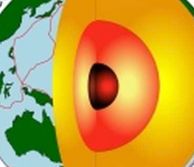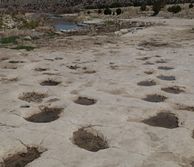Ocean and Climate

We characterise the intricacies of our ocean, and explore its relationship with Earth's ever-changing climate
Liquid water covers some 70% of the Earth’s surface, and an additional 10% is covered by ice. Both are important components of the ever-changing climate on Earth, a planetary body that has been around for roughly 4.5 billion years. Across its lifetime, Earth has sometimes been warmer and sometimes colder than it is today, providing us with the opportunity to study its natural response to environmental change. Such change also involves processes and phenomena relating to the solid earth, such as the birth and demise of ocean ridges, landslides, areas of volcanic activity, and the evolution of basins and mountain ranges, connecting our work on Ocean and Climate to that on geophysical Hazards and the Dynamic Earth.
Through our research, we:
- constrain how our planet's ice sheets have evolved and contributed to sea level change;
- determine the biogeochemistry of the ocean...
- ...and use this knowledge to understand ocean circulation and the carbon cycle through time;
- model the circulation and properties of modern and ancient oceans, tsunamis and interactions between ocean and ice;
- map the landscape and habitats we find deep underwater, and explore how these have changed over Earth's history;
- decipher the properties and vulnerabilities of our ice sheets to future warming;
- seek to understand ocean pollution (see our broader work on Pollution) and manage marine resources; and
- study the dynamics of Earth's plates and plumes.
Overall, our diverse and interdisciplinary Ocean and Climate research seeks to develop a comprehensive understanding of Earth’s ever-changing environment in terms of its chemistry, physics, biology and more – from past dynamics to present day to likely future evolution.
Associated Research Groups
Associated events and seminars
You can see all previous and forthcoming seminars via the ESE Events and Seminars pages.









